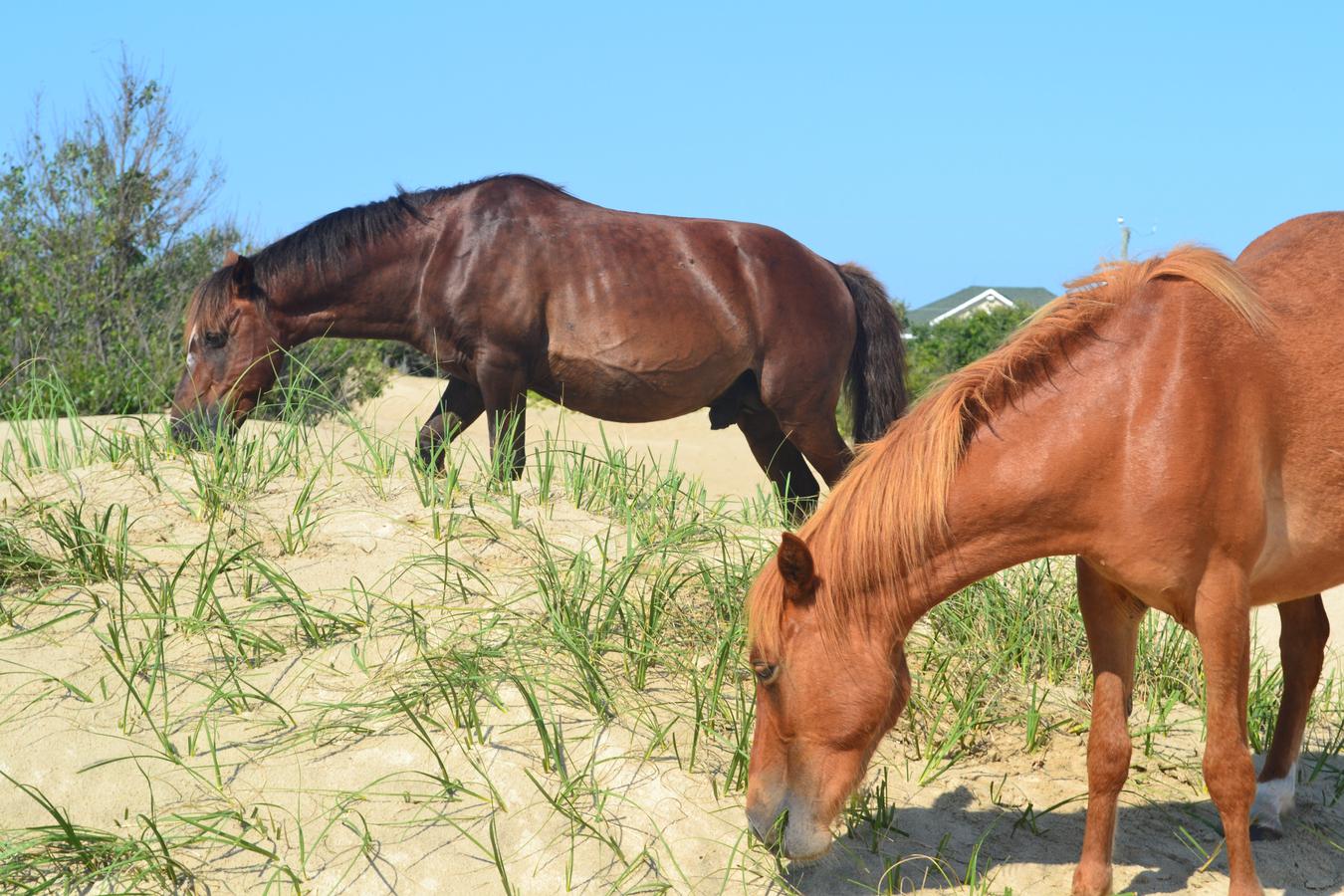YOUR Tax Dollars at Work on the Outer Banks

The Department of the Interior, in the form of United States Fish and Wildlife Service, is determined to zero out every wild horse and burro on the Sheldon National Wildlife Refuge in Nevada. They define America’s wild horses as a feral, invasive species – a pest animal. Listed with feral pigs, nutria, phragmites and Burmese pythons. And what do they do to invasive species? They eradicate them.
What does that have to do with the wild horses living north of Corolla? The Currituck National Wildlife Refuge (CNWR) is owned by United States Fish & Wildlife Service (USFWS, but technically by you and I, as American tax payers). No, they aren’t planning to conduct their standard inhumane helicopter “gathers” of American wild horses (see https://americanwildhorsecampaign.org/) but what they ARE planning to do, does bring the word “inhumane” to mind.
They recently put a fencing project out for bid for 2.9 miles of 15 gauge, 4 strand, 4 point barbed wire fence connecting to an already existing 142 acre high tensile wire electric fence. This will off all access through the Swan Beach section of refuge to all wildlife and is titled “Horse Fence Construction.” Historically, barbed wire became popular in the west in the late 1800’s because it was cheaper, easier, and quicker than other types of fences and its painful barbs were meant to keep cattle from leaning against it. During WWI, barbed wire was used as a military weapon, and today is still used to secure military installations, define boundaries, and contain prisoners.
The University of Illinois wrote in their publication “Illi Horse Net, “barbed wire should NEVER be used for horse fencing. Barbed wire fencing is highly likely to result in serious injury to horses due to its lack of visibility and dangerous sharp edges.”
Imagine a horse or deer running full tilt into razor sharp fence and shredding their skin with deep and jagged wounds – or worse – entangled, struggling for hours, and dying a slow agonizing death. THAT is the reality of barbed wire. Barbed wire is not only cruel to horses and deer, birds are frequent victims too. Picture an owl swooping down after its prey, wings widespread, and becoming caught and tangled as it struggles. Barb wire rusts quickly too, especially in our wet and salt air environment. So tetanus can also be added to the list of horrors.
The CNWR is unstaffed. Who will be regularly checking the 3 mile fence line to ensure no animals are hurt or suffering? Who will walk that federal land every day? Not USFWS. They must already rely on a small group of volunteers to check their existing feral hog bait traps. When asked what happens to the hogs in the traps, the refuge manager replied, “That’s a bit of a PR problem. Let’s just say they don’t leave alive.”
So, if USFWS’s continued refusal to allow the herd size to maintain the scientifically determined number of 120 to 130 needed to maintain genetic diversity is combined with nearly three miles of barbed wire fence, it won’t take helicopter gatherings to further zero out our horses. They know the wild horses are well on their way to extinction already and the barbed wire fence is just another big, cruel, nail in the coffin. The horses won’t be alone though. There will be plenty of “native wildlife,” that they are mission bound to protect, that will suffer and die a horrible death as well.
I can assure you that when the first horse is found severely injured, entangled, or dead from tetanus, and it IS going to happen at some point – they are going to have a big “PR problem.” We will see to that. And WE will be the ones to try and save the horses’ life – or bury it.
